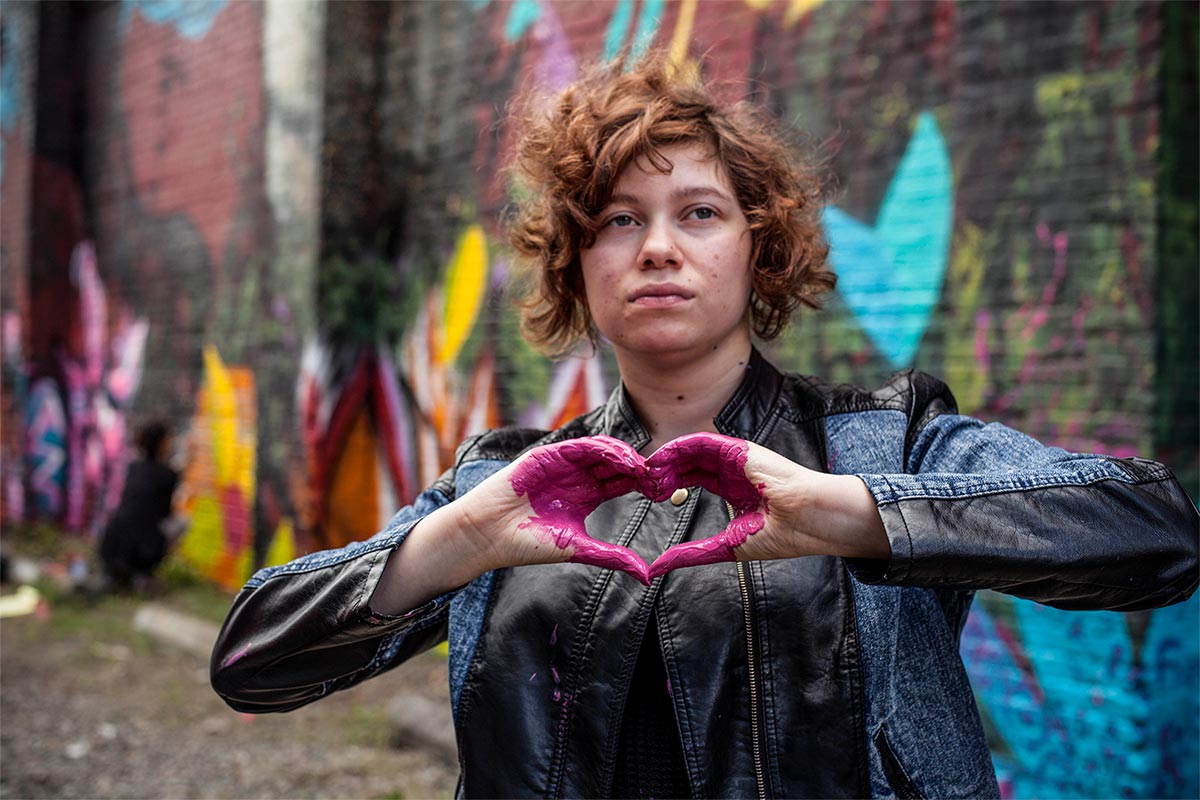The Necessity of Authentic Engagement: 5 Ways to Build Connections with Youth Facing Adversity

In the last 35 years, I have had the privilege to walk beside hundreds, maybe thousands, of young people who were experiencing adversities such as homelessness, running away, abuse, exploitation, and/or trafficking.
One lesson from these experiences rises to top: The necessity of authentic engagement.
What do I mean by engagement?
- The act of intentionally pursuing an authentic connection with another person.
- To attract, captivate, draw, and involve someone’s attention or interest.
Often, when professionals speak of youth engagement, they are referring to youth engaging in services. The engagement I speak of precedes the young person’s engagement in our services. It is engaging a youth in a way that builds a connection—a connection that opens the door to what we have to offer.
Why is the act of engagement so necessary?
- It communicates value to the young person, no matter how they may interact or respond to you. “I see you. You matter. You are a person who is valuable, worthy of time, respect, care and attention. You are worth fighting for - worth pursuing.”
- We believe we have something of value to offer to young people and by the very act of engagement, we are inviting them to consider giving us a chance - to consider accepting our services.
- If we don’t engage young people facing adversity, someone else will - often someone with bad intentions. We are all wired for human connection and in the absence of healthy connections, the door is left open to exploitive and unhealthy relationships.
- Research assures us social connection and relationship is a strong protective factor from abuse, exploitation, and human trafficking (among other things). Disconnection is a risk factor.
- Quite simply…you can’t work with someone who doesn’t have contact with you.

“Thank you for being glad to see me every time I see you.”
-17 yr. old female involved in Street Outreach Services
These words and similar responses from young people had a profound impact on me, influencing how we designed our services for youth facing some of the worst kinds of adversity. In our drop-in center, we were very intentional about how we welcomed each youth who walked in the door.
When you offer services to someone who has no obligation or mandate to accept them, it forces you to rethink your approach.
We must be able to answer the often-unasked question:
“What’s in it for me to accept what you have to offer?”
This question may offend you. It may sound selfish. After 35 years of experience, I have come to understand it is a great question … a smart question - especially for someone living in the culture of survival. When you are facing unrelenting adversity, you become accustomed to living in survival mode. You take on the customs, habits, rules, and traditions of that culture.
Many of the young people we walk along side are members of this culture. Before they will consider engaging with us, they will likely be looking to see if their energies will be wasted - if we are authentic, if we will exploit their vulnerabilities, or if we can help them navigate the adversity they are facing. Their experiences have taught them to examine people’s motives and gauge how this interaction might benefit them. This skill has helped them survive.
So, what should we consider when engaging youth who are experiencing adversity … youth who may be residing in a culture of survival? The following is a list of things to keep in mind if you have the privilege of engaging with one of these young people:
5 Ways to Build Connection with Youth Facing Adversity
1. Be happy to see them every time you see them. Why is this important? Consider 2 different approaches.
- You are “greeted” by someone who doesn’t acknowledge you or worse, appears to be “put out” by your presence, or maybe even disappointed.
- You are greeted with warmth and care. The very act of their smile when you enter communicates a strong message of acceptance and desire to connect.
Which “greeting” attracts or draws you? This may seem like a silly question. It is NOT. After years of working with youth and families in crisis, I know we have to be intentional about how we greet those we serve. Even when it’s your 5th meeting of the day. Even when we don’t feel like it. Even on our tough days.
I have seen many professionals who began with good intentions and practices, but somewhere along the way - they got lost. Sadly, those they served often disengaged from services as soon as possible.
|
Youth Perspective: As a youth who was in various systems for many years and was filtered through multiple agencies, this is something that was really important to me. I dreaded meeting with multiple staff at different agencies. When the staff were happy to see me and welcoming, it made the visit so much easier and took a lot of the anxiety of coming to the building out of my mind. |
2. Be a source of calm and safety. Stress events activate the body’s stress response. When this happens, the body and brain are put on alert and adrenaline, heart rate, and stress hormone levels increase. The impact of a heightened stress response effects a person’s ability to engage. If a young person knows you are safe and provide “calm” in the storm, they may be able to relax and calm the body’s stress response. In turn, they are then able to better engage.
Think holistically (physical, psychological, social, spiritual) about the issue of safety when engaging youth facing adversity and the trauma that often results. Strive to be trauma informed.
| Youth Perspective: When I came from a high stress situation, the last thing I needed was to be brought into another high stress environment. Once I was able to clear my mind from the situation that brought me in, it always felt good to be able to relax in a calm, clean place. I knew I could eat, take a shower, and be safe and comfortable for a while. |
3. Meet youth right where they are. We often hear this phrase but what does it really mean and how do we actually meet youth right where they are?
What does it mean? At the drop-in center, it wasn’t uncommon to hear young people say, “I am only here for the food - I’m not interested in anything else.” It often caught them off guard when we would respond by saying, “We are glad you are here. Let’s get you something to eat.” It was a way for us to connect with them, with the hope of having the opportunity to move forward, to engage them in other services.
My colleague, Mel Miller, would say, “meet that young person right where they are in their journey -- just don’t leave them there”. Take the opportunity they give you and engage in a way that offers something of “value” to them. I am not necessarily talking about “stuff,” it’s about relationship, encouragement, safety, refuge, hope, and a path to opportunity.
How do we meet youth right where they are? Stages of Change is a great framework for understanding where someone is in the change process. It reminds us that we can engage someone, no matter where they are. No longer do we say, “I can’t work with that person - they aren’t ready”, or “they aren’t motivated.” Instead, we say, “Oh, they aren’t even thinking about a change. Now I know just where to start!”
| Youth Perspective: This was important to me because it seemed like I could be at a different place [in the Stages of Change] each time I came in. When I went into a meeting where understanding “where I was” did not seem as important as discussing my case plan, it became overwhelming and caused me to shut down. It feels good when someone is genuinely concerned with where I am on that specific day, rather than trying to push goals that I am not ready for. |
4. Build trust. Trust must be earned. Often, we want young people to automatically trust us because we have good motives, or we want to help, or we work for an organization, or [fill in the blank]. I have seen “helpers” become offended when youth didn’t trust them. Please don’t expect someone who has faced a collection of betrayals and adversities to give you a pass. That is not reasonable or even wise. We can honor them and their experiences by giving them the time and the evidence they need to find us trustworthy.
There are ways to build trust that are universal, but an especially thoughtful and intentional approach is needed when engaging youth who have experienced adversity and trauma.
| Youth Perspective: When being placed in systems of care, it can be really hard to build trust with adults because of the multiple interactions with multiple faces. If I trust you and open up to you, will you or I be gone next month? Having adults that will be there and show unconditional positive regard is life changing. When I ran into a tough choice or problem and had an adult I trusted, I could bounce the idea off of them. When I didn't have an adult I trusted, everything became internalized and most of my choices were instinct-based. |
5. Provide choice and autonomy. When youth face victimization, exploitation, and other adversities, these experiences often come with profound feelings of powerlessness. Choice and autonomy are crucial for healing to occur. Choice fosters and restores respect, efficacy, agency, and dignity.
We aren’t always able to provide the choices that are desired (especially with minors) but we must ask ourselves, “Where can I provide choice and autonomy?” We want to facilitate empowerment and control whenever we can. When we look for ways to give choice and control, we communicate that a young person’s opinion and comfort is important.
| Youth Perspective: Having choices was so important to me, I lacked consistent adults growing up so it really became a power struggle between myself and adults when they came into my life. How is someone I just met trying to make all the decisions for my life? I needed the adults to give me choices. This showed me that they respected me and my unique situation. |
Authentic engagement. We all want to be viewed as authentic or “real” in our interactions. When we reflect on our strategies for engaging vulnerable young people, we know there are hard days. We also know there are situations that require us to dig deeper and think intentionally about our strategies and responses. For young people facing unrelenting adversity, authentic engagement can be an invitation, a life-line to hope and opportunity. Our level of success will be measured, in part, by our effectiveness with the most vulnerable and hard to reach among us.
I will always be grateful to the young people who taught me the necessity of authentic engagement. It is a privilege to walk alongside youth on their journey to healing, hope and prosperity. There is great joy in that journey.
We, at the Center for Combating Human Trafficking and Youth Collaboratory, invite you to utilize these 5 tips in your programming (or wherever you interact with youth) to increase engagement. Be sure to let us know your results!
Contact: combating.humantrafficking@wichita.edu and info@youthcollaboratory.org
For more resources and information please visit the Center for Combating Human Trafficking, Youth Collaboratory, and the Shining Light on the Commercial Sexual Exploitation of Children: A Toolkit to Build Understanding.
Additional Resources
- Child Welfare Information Gateway. (2015). Promoting protective factors for in-risk families and youth: A guide for practitioners. [Factsheet]. Retrieved from https://www.childwelfare.gov/pubPDFs/in_risk.pdf
- Harvard Health Publishing. (2018, May 1). Understanding the stress response: Chronic activation of this survival mechanism impairs health. Retrieved from https://www.health.harvard.edu/staying-healthy/understanding-the-stress…
- Jamieson, A. (2016). SWIS trauma-informed practices: 4 safety’s. [handout]. Retrieved from https://www.amssa.org/wp-content/uploads/2016/09/SWIS-Trauma-Informed-P…;
- Pro-Change Behavior Systems, Inc. (2018). The transtheoretical model. Retrieved from https://www.prochange.com/transtheoretical-model-of-behavior-change
- Research and Training Center for Pathways to Positive Futures. (2019). Emerging Strategies for Engaging Young People in Systems of Care. Portland, OR: Research and Training Center for Pathways to Positive Futures, Portland State University. Retrieved from https://www.pathwaysrtc.pdx.edu/pdf/emerging-strategies-for-engaging-yo…


